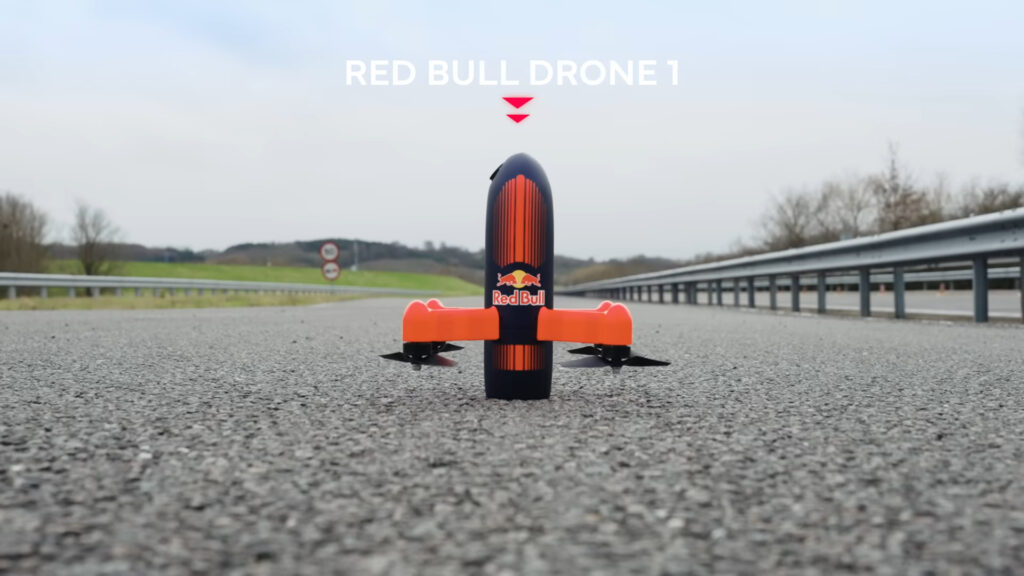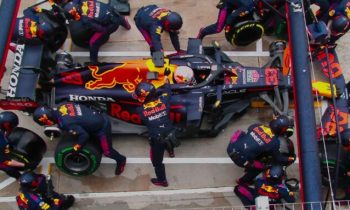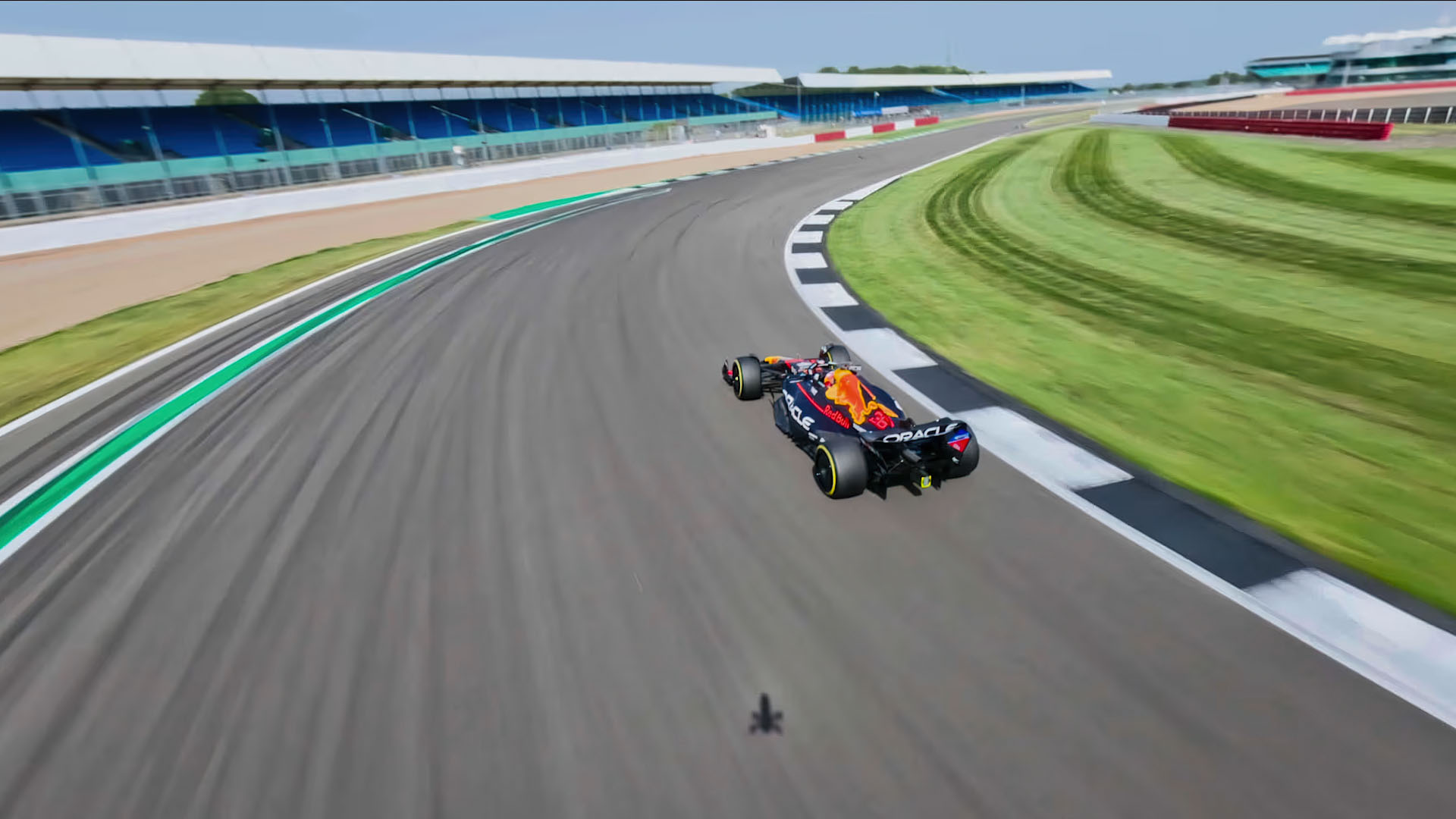It's Formula 1 like you've never seen it, followed by a high-speed drone. The result is mind-blowing.
What moves the fastest? A drone shooting through the air or a Formula 1 car launched on a track? Spontaneously, the most obvious answer would be to designate the automobile racing car. After all, we are talking about vehicles that can easily travel up to 350 km/h. The record in a Grand Prix even reached 370.1 km/h. It was 2005 — a performance by Kimi Räikkönen at Monza.
Advertisement
But it would not be a question of burying unmanned aircraft too soon. Indeed, there are prototypes that can completely compete with an F1 car. This is the case of the very young Red Bull Drone 1, which was built for a very specific communication operation: following a Formula 1 car for an entire lap. And not just any Formula 1: that of Red Bull, driven by the three-time reigning champion, Max Verstappen.

The result, shared on February 27, 2024 on YouTube account of the famous energy drink, is worth the detour. As elsewhere the clips posted online on other platforms, notably on TikTok. Rawer and shorter sequences, but which allow enjoy the show more. This, without cutting, without editing and, above all, without commentary. Just the feat, without any embellishment.
According to Red Bull, “ this has never been done before “. Above all, the aircraft displays performances that are enough to make people envious: the machine goes from 0 to 100 km/h in two seconds. And it only takes two seconds more to go from 100 to 300 km/h. Top speed ? 350 km/h. According to the manufacturer, other drones would only last a few seconds at this rate. The Rocket Drone, its other name, can maintain the pace for three minutes.
Of course, the comparison between a drone and a racing car has its limits. If Red Bull, in another video, shows that the Red Bull Drone 1 wins a speed race against the automobile is to forget that the two machines do not weigh the same. One kilogram for the Rocket Drone. 798 kg for the RB20, the new single-seater which will be driven in 2024 by Max Verstappen. Less mass to move, less wind resistance. This is also why F1 cars try to stay light.
Advertisement
“ A drone capable of accelerating twice as fast as an F1 car »
Red Bull
Before this media operation, filmed on the Silverstone Grand Prix circuit, in the United Kingdom, it took a year of preparation to “ create a drone capable of accelerating twice as fast as an F1 car “. The manufacturer has also joined forces with the Dutch Drone Gods collective. It is one of its members, Ralph “Shaggy” Hogenbirk, who piloted the drone with a first-person view (FPV).
Red Bull's communication stunt here is a classic. In the same genre, the brand joined forces with Felix Baumgartner to organize another extreme feat in 2012. Making the Austrian the first man to make the highest jump (at the time, almost 39 km altitude) and incidentally allowing him to become the first to break the sound barrier (he reached Mach 1.25 ) during a free fall.
Reinventing the way of seeing a Grand Prix?
Beyond the company's well-crafted promotion, which takes place a few days before the start of the 2024 Formula 1 season (the first race is scheduled for March 2 in Bahrain), this experiment turns out to be a unique approach to following a car or a race. Never, in fact, has Formula 1 been shown in this way, and for so long.
Today, the cars are followed by cameras scattered around a circuit, at varying heights, and to show different areas. We can also benefit from aerial views, with the support of helicopters. And finally, there are also on-board cameras, directly on the cars. The drone could therefore offer a fourth option to show the races in a new light.
Unimaginable? There is certainly the question of the safety of the public, the paddock and the drivers – although some could say that the danger is already there for the twenty drivers when they move in a pocket handkerchief at very high speed. If a drone fell on the runway or, even worse, on someone, it would be a disaster. Especially if it causes a more serious accident behind.


The perspective was, however, opened by… Max Verstappen himself. “ It's undoubtedly a way to change the way people look at Formula 1 “, did he declare. Especially since the image quality is really good – a stabilized 4K camera is on board to ensure image control without any judder. At one point, Shaggy even allows himself a dynamic camera movement, during a turn.
It's impossible to say if this type of drone will one day support F1's audiovisual production – but as it is also a major spectacle, the door is not completely closed. There will obviously be technical problems to resolve, such as the autonomy of these machines (or, it will be necessary to provide a sufficiently large fleet to make relays throughout the race) or air turbulence, and the challenges of security.
Pilot distraction is another issue, for example, by preventing the machine from entering too much into their field of vision. Other points to check:
- Pay attention to obstacles (cranes, bridges, etc.).
- Do not get too close (in the test, Shaggy estimated sometimes getting as close as 2 or 3 meters).
- Anticipate certain maneuvers, such as braking, so as not to be surprised.
- Choose a less risky flying area — for example, behind cars, or to the side, and not above the asphalt.
So many considerations which mean that we should probably not see this type of initiative emerge from 2024. On the other hand, perhaps this will change in future editions. This would make the races much more spectacular, whether live, or during future seasons of Formula 1: Drive to Survive on Netflix.




